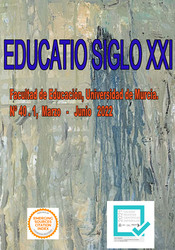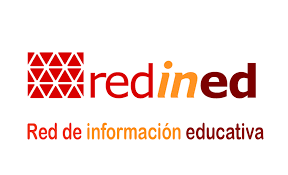Una nueva herramienta para evaluar la comprensión del cálculo confiando en la comprensión relacional e instrumental
Resumen
Los cambios en los libros de matemáticas de la escuela secundaria en los últimos años han llevado a algunos cambios en el concepto de cálculo, y la mayoría de los estudiantes solían trabajar duro para memorizar en lugar de comprender. En los primeros años después de ingresar a la universidad, serán desafiados por los mismos conceptos y su aplicación en otras ciencias. La revisión de los estudios anteriores ha demostrado que hasta ahora no se ha desarrollado ningún instrumento de investigación para abordar tales desafíos. Luego, los investigadores del estudio desarrollaron y estandarizaron un instrumento. La población estaba compuesta por todos los estudiantes de primer año de pregrado de ingeniería y ciencias básicas de la Universidad de Teherán. Usando una técnica de muestreo intencional, se seleccionaron 162 estudiantes varones y mujeres. Todos los seleccionados habían pasado el curso de cálculo 1. Los investigadores consideraron algunos factores y desarrollaron un instrumento y finalmente lo validaron con base en esos componentes. Además, dado que no había herramientas disponibles para medir la comprensión relacional e instrumental de la derivada, se diseñaron y agregaron algunas preguntas sobre el concepto de definición de derivada al final del cuestionario. Finalmente, después de las investigaciones realizadas a través del análisis factorial exploratorio, se desarrolló e introdujo un instrumento de investigación para medir la comprensión del concepto de derivada y su comprensión instrumental y relacional.
Descargas
-
Resumen1138
-
PDF 689
Citas
Aksoy, Y. (2007). The effect of computer algebra systems on the teaching of derivative concept. Ph.D. Thesis. Gazi University, Ankara.
Apostol, T. M. (2007). Calculus, Volume I, One-variable Calculus, with an Introduction to Linear Algebra (Vol. 1). John Wiley & Sons.
Ayebo, A., Ukkelberg, S., & Assuah, C. (2017). Success in introductory calculus: The role of high school and pre-calculus preparation, International Journal of Research in Education and Science (IJRES). 3(1), 11-19.
Bahar, E. E., Rahman, A., & Minggi, I. (2012). Analisis Pemahaman Mahasiswa Terhadap Konsep Limit Fungsi di Satu Titik (Studi Kasus pada Mahasiswa Jurusan Matematika FMIPA UNM). Sainsmat, 1(2), 181–190.
Balcı, M. (2012). Genel matematik-1. İzmir: Sürat Üniversite Yayınları.
Bingölbali, E. (2010). Türev kavramına ilişkin öğrenme zorlukları ve kavramsal anlama için öneriler. M.F. Özmantar, E. Bingölbali ve H. Akkoç (Ed.), Matematiksel kavram yanılgıları ve çözüm önerileri (Gözden geçirilmiş baskı) içinde (223-255). Ankara: Pegem Akademi yayınları.
Berresford, G. & Rockett, A. (2015). Brief applied calculus. Nelson Education.
Bruner, J. (1966). Toward a Theory of Instruction. Cambridge, MA: Belknap Press.
Brown, J.S., & VanLenhn, K. (1980). Repair theory: A generative theory of bugs in procedural skills. Cognitive science, (4), 399-426.
DBE (Department of Basic Education). (2014). National Senior Certificate Examination: Diagnostic Report.
DBE (Department of Basic Education). (2015). National Senior Certificate Examination: Diagnostic Report.
Denbel, D.G. (2015). Some Conceptual Difficulties of Students on Derivation. Journal of Educational and Management Studies, 5(4), 211-214.
Desfitri, R. (2016). In-Service Teachers’ Understanding on the Concept of Limits and Derivatives and the Way They Deliver the Concepts to Their High School Students, Journal of Physics: Conference Series 693, 012016, 1-9.
Davis R.B., & Mcknight, C.C. (1979). Modeling the processes of mathematical thinking. Journal of children’s mathematics behavior, (2), 91-113.
Dienes, Z.P. (1971). Building up mathematics (4th ed). London: Hutchinson.
Fuentealba, C., Badillo, E., Sánchez-Matamoros, G., Cárcamo, A. (2019). The Understanding of the Derivative Concept in Higher Education. EURASIA Journal of Mathematics, Science and Technology Education, 15(2), 2-15.
Gagne, R.M. (1977). The conditions of learning. New York: Holt, Rinehart & Winston.
Grabiner, J. V. (1983). The changing concept of change: the derivative from Fermat to Weierstrass. Mathematics Magazine, 56(4), 195-206.
Gür, H., & Barak, B. (2007). Ortaöğretim 11. sınıf öğrencilerinin türev konusundaki hata örnekleri. Educational Sciences: Theory & Practice, 7(1), 453-480.
Haapasalo, L. & Zimmermann, B. (2015). Investigating mathematical beliefs by using a framework from the history of mathematics. In: C. Bernack-Schler, R. Erens, T. Leuders & A. Eichler (Eds.), Views and beliefs in mathematics education (pp. 197–211). Wiesbaden, Germany: Springer Spektrum.
Hart, K.M. (1981). Children’s understanding of mathematics: 11-16. London: John Murray.
Hӓhkiöniemi, M. (2005). Is there a lımıt in the derıvatıve? – exploring students’ understanding of the limit of the difference quotient. In M. Bosch (Eds), Proceedings of the fourth congress of the European society for research in mathematics education (CERME 4), Sant Feliu de Guíxols, Spain, 17 – 21 February 2005, 1758-1767.
Hoffmann, L.D. & Bradley, G.L. (2010). Calculus for Business, Economics, and the Social and Life Sciences, Claremont McKenna College.
Jaworski, B. (2015). Mathematics meaning-making and its relation to design of teaching. PNA, 9 (4), 261–272.
Jones, P.S. (1969). The history of mathematics as a teaching tool. In national council of teachers of mathematics, Historical topics for the mathematics classroom, 31st year book. Washington, DC: The council, 1-7.
Karadeniz, A. A. (2003). Yüksek matematik cilt-1 diferansiyel ve integral hesap. Çağlayan Basımevi. İstanbul. 13. Baskı.
Kilpatrick, J. Swafford, J. & Findell, B., eds. (2001). Adding it up: Helping children learn mathematics, Washington DC: National Research Council.
Laridon, P., Jawurek, A., Kitto, A., Pike, M., Myburgh, M., Rhodes-Houghton, R., Sasman, M., Scheiber, J., Sigabi, M., & Van Rooyen, R. (2007). Classroom Mathematics: Grade 12 learners’ book. Heinemann Publishers (Pty) Ltd, Johannesburg: South Africa.
Lesh, R., Hoover, M., Hole, B., Kelly, A., & Post, T. (2000). Principles for developing thought-revealing activities for students and teachers. Handbook of research design in mathematics and science education (pp. 591–645). Mahwah, NJ: Lawrence Erlbaum Associates.
Maharaj, A., & Ntuli, M. (2018). Students’ Ability to Correctly Apply Differentiation Rules to Structurally Different Functions. S Afr J Sci, 114(11/12), 1-7.
NCTM (National Council of Teachers of Mathematics). (2014). Principles to actions: Ensuring mathematical success for all. Reston, VA: NCTM.
O’Hear, A. (1981). Education, society, and human nature. London: Routledge & Kegan Paul.
Özkan, E.M. & Ünal, H. (2009). Misconception in Calculus-I: Engineering students’ misconceptions in the process of finding domain of functions. Procedia - Social and Behavioral Sciences, 1(1), 1792-1796.
Pearson, A.T. (1980). Understanding mathematical understanding: Response to Wagner. Philosophy of education, 384-387.
Pino-Fan, L. R., Godino, J. D., & Font, V. (2018). Assessing key epistemic features of didactic-mathematical knowledge of prospective teachers: the case of the derivative. Journal of Mathematics Teacher Education, 21(1), 63-94.
Polya, G. (1965). Mathematical discovery: on understanding, learning, and teaching problem solving. New York: Wiley.
Roundy, D. Dray, T. Manogue, C. A. Wagner, J. & Weber, E. (2015). An extended theoretical framework for the concept of the derivative. In T. Fukawa-Connelly, N. E. Infante, K. Keene, & M. Zandieh (Eds.).
Rohde, U. L. Jain, G. C. Poddar, A. K. & Ghosh, A. K. (2012). Introduction to differential calculus: systematic studies with engineering applications for beginners. Wiley.
Sahin, A., Cavlazoglu, B., & Zeytuncu, Y.E. (2015). Flipping a college calculus course: A Case study. Journal of Educational Technology & Society, 18(3), 142.
Sahin, Z., Yenmez, A.A., & Erbas, A. (2015). Relational Understanding of the Derivative Concept through Mathematical Modeling: A Case Study, Eurasia Journal of Mathematics, Science & Technology Education, 11(1), 177-188.
Skemp, R. R. (1976). Relational understanding and instrumental understanding, Mathematics Teaching, 77, 20–26.
Skemp, R.R. (1978). Relational understanding and Instrumental understanding. Arithmetic Teacher, 26(3), 9-15.
Skemp, R. R. (2006). Relational Understanding and Instrumental Understanding. Journal Nayional Council of Teachers of Mathematics (NCTM), 12(2), 88–95.
Star, J. R. & Stylianides, G. J. (2013). Procedural and Conceptual Knowledge: Exploring the Gap Between Knowledge Type and Knowledge Quality. Canadian.
Tall, D. (1993). Students’ difficulties in calculus. Proceedings of Working Group 3 on Students’ Difficulties in Calculus, ICME-7 1992 (pp. 13–28). Quebec, Canada.
Thomas, G.B. D. Weir, M., & Hass, J. (1988). Thomas’ Calculus, 11th Edition, Massachusetts.
Tierney, W. G., & Garcia, L. D. (2008). Preparing Underprepared Students for College: Remedial Education and Early Assessment Programs. Journal of at-Risk Issues, 14(2), 1-7.
Ubuz, B. (2001). First year engineering students’ learning of point of tangency, numerical calculation of gradients, and the approximate value of a function at a point through computers. Journal of Computers in Mathematics and Science Teaching, 20(1), 113-137.
Ubuz, B. (2007). Interpreting a graph and constructing its derivative graph: stability and change in students’ conceptions. International Journal of Mathematical Education in Science and Technology, 38(5), 609-637.
Van Engen, H. (1953). The formation of concepts. In H.F. Fehe (Ed.), The learning of mathematics: Its theory and practice, 21st yearbook of the National Council of Teachers of Mathematics. Washington, DC: The Council, 69-98.
Wagner, P.A. (1980). A philosophical approach to mathematics education. Philosophy of education, 376-383.
Watson, A, & Sullivan, P. (2008). Teachers learning about tasks and lessons. In D. Tirosh, & T. Wood (Eds), Tools and resources in mathematics teacher education (pp. 109-135). Rotterdam: Sense Publishers.
Widada, W., Sunardi, H., Herawaty, D., Boby, E., & Syefriani, D. (2018). Abstract Level Characteristics in SOLO Taxonomy during Ethnomathematics Learning, Int. J. Sci. Res., 7(8), 352–355.
Woods, R.G. & Barrow, R.C. (1975). An introduction to philosophy of education. London: Methuen.
Yoong, W.KH. (1984). Aspects of mathematical understanding, Singapore Journal of Education, 8(2), 45-55.
Zandieh, M. (2000). A theoretical framework for analyzing student understanding of the concept of derivative. In E. Dubinsky, A. H. Schoenfeld, & J. Kaput (Eds.), Research in collegiate mathematics education IV (pp. 103–127). Providence, RI: American Mathematical Society.
Zachariades, T., Pamfilos, P., Christou, C., Maleev, R. & Jones, K. (2007). Teaching introductory calculus: Approaching key ideas with dynamic software. Paper presented at the CETL-MSOR Conference on Excellence in the Teaching and Learning, Stats & OP, University of Birmingham, 10-11.
Derechos de autor 2022 Servicio de Publicaciones de la Universidad de Murcia

Esta obra está bajo una licencia internacional Creative Commons Atribución-NoComercial-SinDerivadas 4.0.
Las obras que se publican en esta revista están sujetas a los siguientes términos:
1. El Servicio de Publicaciones de la Universidad de Murcia (la editorial) conserva los derechos patrimoniales (copyright) de las obras publicadas, y favorece y permite la reutilización de las mismas bajo la licencia de uso indicada en el punto 2.
2. Las obras se publican en la edición electrónica de la revista bajo una licencia Creative Commons Reconocimiento-NoComercial-SinObraDerivada 4.0 Internacional (texto legal). Se pueden copiar, usar, difundir, transmitir y exponer públicamente, siempre que: i) se cite la autoría y la fuente original de su publicación (revista, editorial y URL de la obra); ii) no se usen para fines comerciales; iii) se mencione la existencia y especificaciones de esta licencia de uso.
3. Condiciones de auto-archivo. Se permite y se anima a los autores a difundir electrónicamente las versiones pre-print (versión antes de ser evaluada) y/o post-print (versión evaluada y aceptada para su publicación) de sus obras antes de su publicación, ya que favorece su circulación y difusión más temprana y con ello un posible aumento en su citación y alcance entre la comunidad académica. Color RoMEO: verde.











